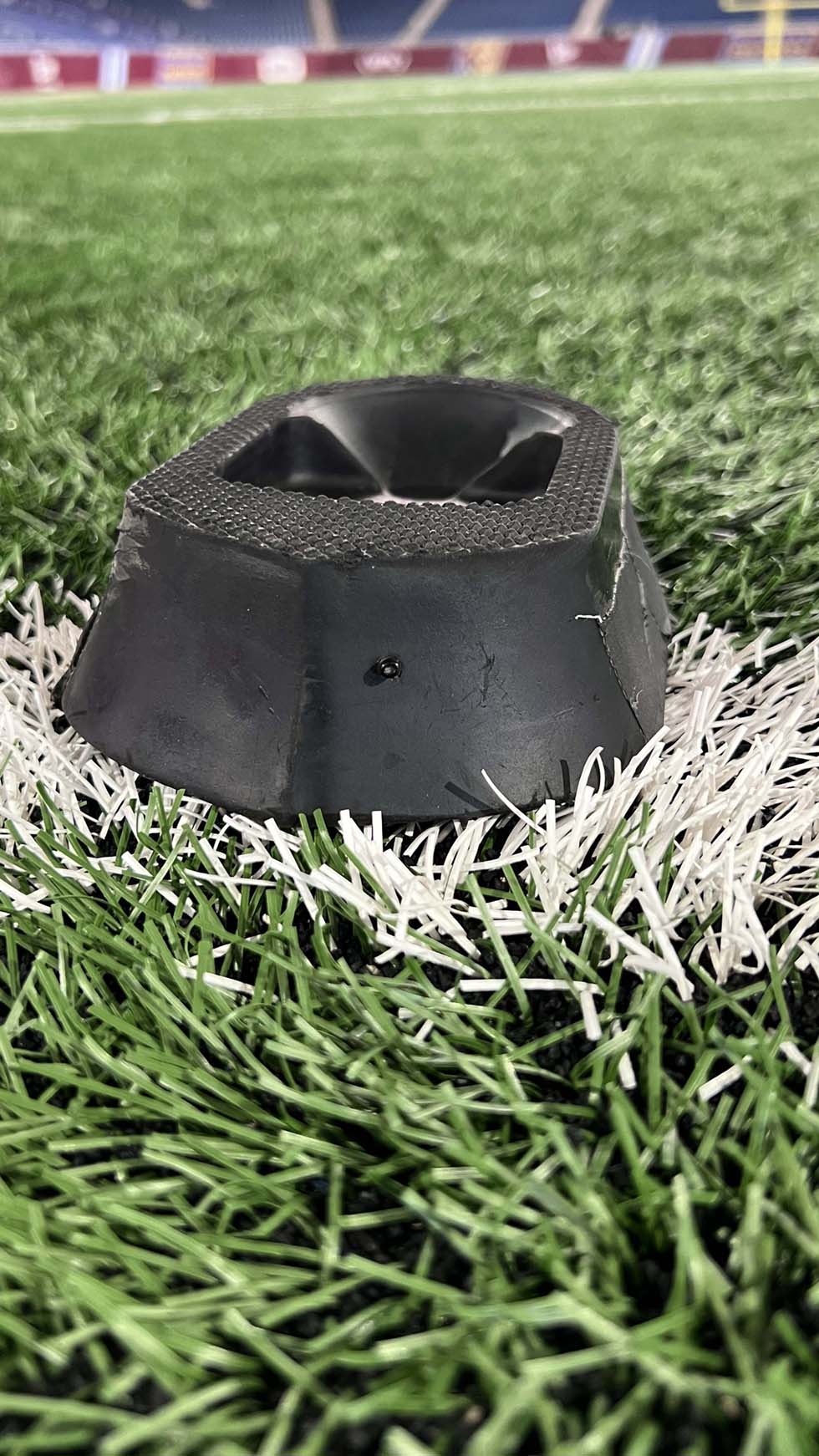ESPN Doubles Down on Immersive Fan Experience for UFL Championship
Broadcaster will add more chest and POV cameras and stream an announcer-free alt-cast

(Editor’s note: The 2025 UFL Championship Game between the D.C. Defenders and Michigan Panthers kicks off Saturday, June 14, at 8 p.m. Eastern. The game will be televised on ABC and ESPN Deportes and streamed on ESPN+.)
ST. LOUIS—In sports and television production, playing to one’s strengths is a recipe for success—at least that’s what the UFL and ESPN are banking on for the league’s championship game this weekend here at The Dome at America’s Center.
In its brief history, the UFL has embraced the use of television technology to bring audiences closer to games and create a viewing experience that’s far more immersive than the typical college or NFL game on TV.
The league has pioneered using technology like Mindfly cameras embedded at chest level in the pads of players, drone-mounted cameras that circle around on-field action, Steadicam operators who run on and off the field during the game and multiple mics—for players, coaches and referees—that convey to viewers a sense of not simply being in the stands but being a part of the game.
ESPN, which is producing the June 14 UFL Championship Game between the D.C. Defenders and the Michigan Panthers in St. Louis, is tweaking that formula to further heighten the experience. The sports network will rely on additional chest and POV cameras compared to regular-season coverage, announcer-free audio for its ESPN+ video stream and other refinements to make that happen.
Almost Feel the Hit
For the announcer-free ESPN+ alternate-cast of the championship game, the broadcaster has set up an entire control room at its Bristol, Connecticut, headquarters, said ESPN REMI operations manager Eric Kimmel.
While ESPN has run what it calls “Audio Blitz” segments during the regular season to highlight fan sounds and the audio of coaches and quarterbacks, the ESPN+ alt-cast will be announcer-free for the entire game.
The professional video industry's #1 source for news, trends and product and tech information. Sign up below.
“We’re really providing an opportunity for fans to watch the game as though they're on a sideline—as though they’re part of that team—and hearing every bit,” Kimmel said.
This focus on the sounds of the game should accentuate the nearly visceral experience ESPN has sought to create during the season. “What I really love is, you almost feel the hits in those audio moments when the players are running—a running back running through the line. You can almost feel the sound—the hits, those grunts, the equipment-on-equipment sounds, helmets on shoulder pads,” ESPN senior operations manager Jim Birch said. “It’s so abrupt, you almost feel like you’re there hearing it as if it’s happening right next to you.”

There’s more to the audio than creating that sense of being a part of the action, though. “Every week, we’ve had eight player microphones and roughly about 25 channels of intercom that we can listen into,” Kimmel said.
“Coaches talking to players; coaches talking to each other; Mike Pereira or Dean Blandino from the replay center—we can listen in on their communication from the replay command center in California directly to officials on the field,” he said. “We really bring the viewer into every decision, every emotion, everything that goes into each and every play.”
Chest and POV Cams
Audio is only part of the story when it comes to transforming the UFL experience for the fan at home. For the league championship, ESPN will increase the number of Mindfly chest cameras from the two typically used to four. Feeds from the cameras, available to the production crew in real time, are integrated into the coverage of plays as they unfold, Kimmel said.
“We’re really trying to get the viewer experience as close to the game action as possible,” he said. “We're trying to accomplish that with these body-worn cameras and the abundance of microphones worn by players, coaches and referees.”
ESPN will also deploy additional point-of-view (POV) cameras to capture players entering the stadium through the tunnels. “We want to get that feeling of going from the locker room pregame with our cameras, taking them out of the locker room, through the tunnels and onto the field,” said Birch. “We want viewers to feel as if they’re part of the team going onto the field.”
The additional POV cameras as well as two more handheld cameras on the field will create greater demand for RF channels. To handle the demand, the broadcaster will rely on the same format it uses during the college football playoffs, said Kimmel.
“We have a proven model that's reliable and flexible,” he said. “We're going to be at a 30 path transmission, and we'll have some flexibility to access close to 40 sources across those 30 paths.”
Looking Ahead
While the broadcaster preps for production of Saturday’s game, it’s not too soon to look back on the season and recall the successes and areas where improvement is needed for next year. Kimmel and Birch agreed that the biggest success of UFL television production is the willingness of the UFL, ESPN and Fox Sports (Fox is a 50% stakeholder in the league) to focus on giving viewers greater access to the games through innovative technology and production techniques.
When it comes to the areas where improvements will help, the ability of the chest cameras to stand up to hits is top of mind, Kimmel said.
“I think we may have underestimated a little bit how much of an impact hits may be having—either a broken camera lens or some other things that have to be tweaked if a player gets knocked down,” Kimmel said.
“Both Fox and ESPN have provided feedback to the vendor and the league,” he added. “They continue to make adjustments to ensure video and audio remain reliable when you have a 250-pound person crashing into you and tackling you to the ground.”
Phil Kurz is a contributing editor to TV Tech. He has written about TV and video technology for more than 30 years and served as editor of three leading industry magazines. He earned a Bachelor of Journalism and a Master’s Degree in Journalism from the University of Missouri-Columbia School of Journalism.

